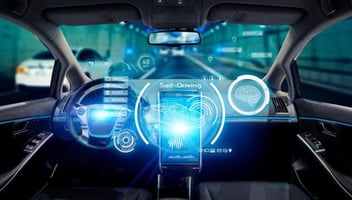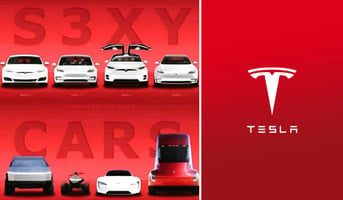"Made in China" no longer has a bad connotation, thanks to the world of EVs. The auto industry has...
Why EV Braking Systems Are a Major Safety Issue?

To be clear, this is a significant issue for the NHTSA or national highway safety commission, and here's why. Electric vehicles (EVs) have been hailed as some of the safest cars on our roads. They come with advanced technology that detects dangers quickly, prevents collisions, and saves lives. However, as our streets move towards electrification, a new potential safety problem is emerging, and that is related to EV braking systems. The National Highway Traffic Safety Administration (NHTSA) has been investigating this issue for years and has found that it is related to software or the braking systems that manage a car's progressive braking and automated cruise control working improperly. While Tesla has been in the spotlight for years as NHTSA only picked a fight with them, other manufacturers like GM, Ford, and Stellantis have cases pending with the administration regarding EV braking issues. In this blog, we'll explore why EV braking systems are critical safety issues and how OEMs and safety administrations will evolve in an all-electric vehicle world.

1. Safety Issues: Most modern cars are equipped with computer-controlled brake systems. They work by exchanging data between multiple sensors and the car's central computer system, which then calculates how much braking pressure is required. These sensors monitor the speed of the wheels, hydraulic pressure, and other vital parameters. However, in EVs, as they use regenerative braking which recovers energy and charges the battery instead of traditional brakes, a software failure or improper calibration can have devastating consequences. When this happens, the brake system may fail to respond correctly, leading to the vehicle not being able to come to a stop while the driver is trying to apply the brakes.
2. The NHTSA & EVs: The National Highway Traffic Safety Administration is responsible for ensuring that all cars meet strict safety standards. They have been actively investigating safety issues in EVs by querying owners for complaints and investigations in response to some of these complaints. It is not fair to say that NHTSA has only picked a fight with Tesla as cases from other OEMs are now being scrutinized. But Tesla has been in the limelight for some time, and with the help of experts, they were able to solve issues like the Autopilot feature. Although there are still unresolved issues, safety has always been a top priority as seen in their Model S sedan which boasts of the highest safety rating ever given to any car by the same NHTSA.

Evolving Safety Standards: EVs will dominate our roads in the coming years, and safety standards will also need to evolve. The traditional safety tests do not cover the challenges brought by regenerative braking systems. Therefore, developing new safety standards for electric cars is more critical than ever to ensure passengers and other road users stay safe. As technology rapidly evolves, automakers must compete with each other not only on safety feature sets but also for driver trust. Consequently, cars' braking systems are being upgraded, tested and refined to deliver even more accuracy, applicability and advances in safety systems.
4. Building Trust in EVs: It is essential that, as we transition to EVs, despite the safety issues and tests that still require refinement, consumers still trust these vehicles. This is entirely possible as there are already precedents, such as Tesla, that show advancements and improvements are possible. With the growing demand for EVs, OEMs must focus on building vehicles that meet safety standards and build trust in the brand through information sharing, increased transparency, and reliable safety measures that continuously evolve.
5. OEMs Responsibility: As more automakers set out to produce EVs to meet the market's demand, they are responsible for ensuring that safety is a top priority and that testing and market analysis are appropriately carried out. Therefore, OEMs need to work hand in hand with safety administrations to develop specific safety protocols that will cover electric vehicles not currently in place in traditional gas-powered cars.

The safety challenges that come with EV braking systems are undeniable, and all manufacturers and safety administrations must work together to mitigate them extensively. As technology advances and becomes more sophisticated in the market, new protocols and safety standards must develop hand in hand. OEMs, in particular, must stay current on developments in EV brake technology and evolve their safety systems while remaining reliable, transparent, and open to customer feedback. Only then will EVs achieve the same trust and mainstream acceptance as gas-powered vehicles.
Pic Credit - EV Brakes Ford Recall GM Recall Chevy Cruise New Tesla Investigation


